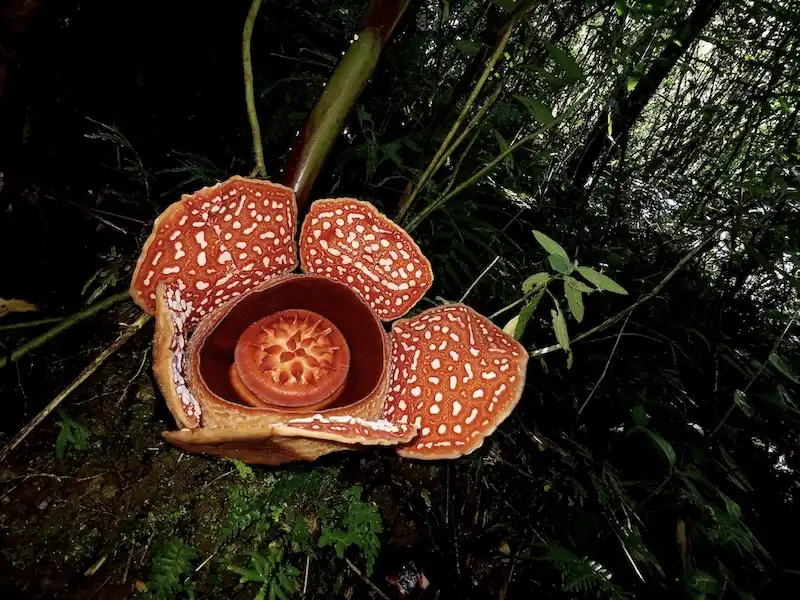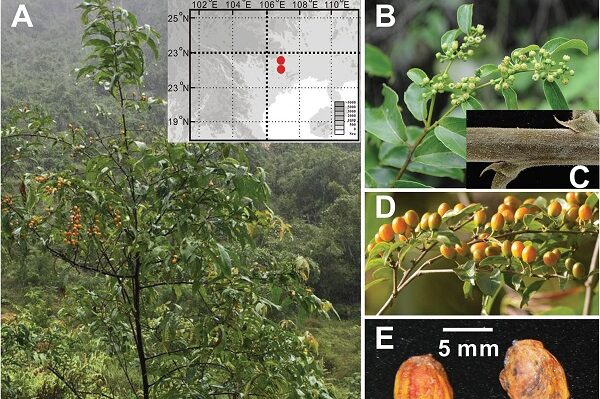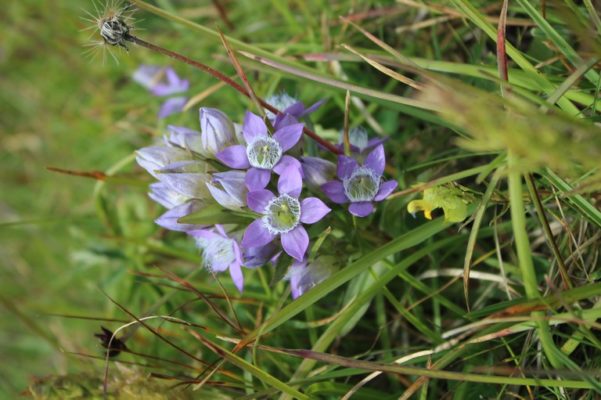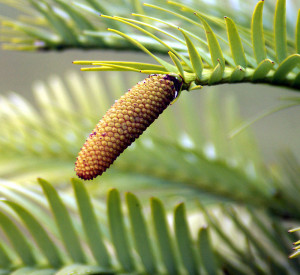





This week’s post was written by Jonathan Ingram, Senior Commissioning Editor / Science Writer for the Journal of Experimental Botany. Jonathan moved from lab research into publishing and communications with the launch of Trends in Plant Science in 1995, then going on to New Phytologist and, in the third sector, Age UK and Mind.
In this week of the XIXth International Botanical Congress (IBC) in Shenzhen, it seems appropriate to highlight outstanding research from labs in China. More than a third of the current issue of Journal of Experimental Botany is devoted to papers from labs across this powerhouse of early 21st century plant science.
Collaborations are key, and this was a theme that came up time again at the congress. The work by Yongzhe Gu et al. is a fine example, involving scientists at four institutions studying a WRKY gene in wild and cultivated soybean: in Beijing, the State Key Laboratory of Systematic and Evolutionary Botany at the Institute of Botany in the Chinese Academy of Sciences, and the University of the Chinese Academy of Sciences; and in Harbin (Heilongjiang), the Crop Tillage and Cultivation Institute at Heilongjiang Academy of Agricultural Sciences, and the College of Agriculture at Northeast Agricultural University. Interest here centers on the changes which led to the increased seed size in cultivated soybean with possible practical application in cultivation and genetic improvement of such a vital crop.
Botanic gardens are also part of the picture. In another paper in the same issue, Yang Li et al. from the Key Laboratory of Tropical Plant Resources and Sustainable Use at Xishuangbanna Tropical Botanical Garden in Kunming (Yunnan) and the University of the Chinese Academy of Sciences in Beijing present research on DELLA-interacting proteins in Arabidopsis. Here the authors show that bHLH48 and bHLH60 are transcription factors involved in GA-mediated control of flowering under long-day conditions.
Naturally, research on rice is important. Wei Jiang et al. from the National Key Laboratory of Crop Genetic Improvement, Huazhong Agricultural University (Wuhan) describe their research on WOX11 and the control of crown root development in the nation’s grain of choice, which will be important for breeders looking to increase crop yields and resilience.
The other work featured is either in Arabidopsis or plants of economic importance: Fangfang Zheng et al. (Qingdao Agricultural University, also with collaborators in Maryland) and Xiuli Han et al. (Beijing); Yun-Song Lai et al. (Beijing/Chengdu – cucumber), Wenkong Yao et al. (Yangling, Shaanxi – Chinese grapevine, Vitis pseudoreticulata), and Xiao-Juan Liu et al. (Tai-an, Shandong – apple).
Shenzehn has grown rapidly and is now highly significant for life science as home to the China National GeneBank (CNGB) project led by BGI Genomics. The vision as set out by Huan-Ming Yang, chairman of BGI-Shenzhen, is profound – from sequencing what’s already here, often in numbers per species, to innovative synthetic biology.
Shenzehn is also home to another significant institution, the beautiful and scientifically important Fairy Lake Botanic Garden. At the IBC, the importance of biodiversity conservation for effective, economically focused plant science, but also for so many other reasons to do with our intimate relationship with plants and continued co-existence on the planet, was a central theme.
The research highlighted in Journal of Experimental Botany is part of the wider, positive growth of plant science (and, indeed, botany) not just in China, but worldwide. The Shenzehn Declaration on Plant Sciences with its seven priorities for strategic action, launched at the congress, will be a guide for the right development in coming years.

Image credit: Tom Paxton
It felt particularly fitting to travel to a plant science workshop in Japan, home of hanami, the ancient celebration of the beauty of flowers. Researchers from Heidelberg University, Germany; Kyoto University, Japan; and the University of Bristol, UK, met to discuss their cutting edge research in a meeting aptly titled ‘Novel Frontiers in Botany’.
Plant science at all three of these universities is enhanced by their botanic gardens. Heidelberg’s sounded especially impressive: established in 1593, it boasts over 10,000 species! As a former employee of the Royal Botanic Gardens, Kew (UK), which was recently threatened with a £5 million cut in government spending, I started thinking how important botanic gardens such as these are as vital tools for research, conservation, education and recreation.
Botanic gardens are focused pools of amazing expertise in horticulture, taxonomy and ethnobotany, and this knowledge is constantly growing. Plant collections at Kyoto, Heidelberg and Bristol botanic gardens are continuously being visited by researchers studying almost all aspects of plant science. Some of the rarest species in the world can be cultivated and studied in botanic gardens without damaging wild populations; others are investigated for potential medicinal properties, evolution is studied by building banks of DNA, and we can get a fantastic overview of the diversity of life, from the microscopic structures of pollen to the architecture of trees.
In the same way that zoos protect endangered species, botanic gardens around the world host and preserve at least a third of all known species of flowering plants.

Wollemi pine pollen cone. Image credit: Velella. Used under license: CC BY-SA 3.0.
One of my favorite examples is the wollemi pine (Wollemia nobilis). Plant nerds like me will know that the wollemi pine was only known from 2 million-year-old fossils until field officer David Noble discovered around 100 plants growing at Wollemi National Park, Australia. These living fossils were propagated by botanic gardens in Australia and internationally, and are now a popular tree in cultivation around the world.
Another important facet of ex situ conservation is the creation of seed banks. The Royal Botanic Gardens, Kew, established the Millennium Seed Bank in 1996, which aims to provide an ‘insurance policy’ against extinction by storing the seeds of 25% of all seed-bearing plants. The majority of the stored 75,000 species will be rare or threatened with extinction.
As well as bolstering plant species on their own sites, many botanic gardens are involved in restoration projects of damaged ecosystems around the world. Botanic Gardens Conservation International, a global network for botanic gardens, describes many such efforts including the restoration of Brazil’s Atlantic Forest by the Rio de Janeiro Botanic Garden, the restoration of local upland forest by Kenya’s Brackenhurst Botanic Garden, and Hawaiian beach and coastal restoration by the US National Tropical Botanic Garden. In each case, rare and endemic species of plant replaced invasive species and increased the biodiversity of the entire ecosystem.

Botanic gardens often hold events, like the Easter sculpture festival at the University of Bristol Botanic Gardens. Image credit: Sarah Jose
Botanic gardens are a great place for an afternoon stroll with the family, which plays nicely into their ulterior motive: education. Plants are amazing but they are often overlooked. By displaying the most wonderful and fascinating species from around the world, botanic gardens kindle an interest in plants from the general public, as well as potentially teaching children where food comes from, or fostering a love of nature and the environment.
It doesn’t stop there though. As well as restoration projects, which often include local people who learn about the economic importance of preserving their native ecosystems, the gardens can be involved in broader efforts. For example, the National Museums of Kenya are looking to develop a botanic garden. The garden will facilitate the transfer and accumulation of ethnobotanical knowledge surrounding the relationships between the Kenyan people and their local plant species; useful information that will also promote the importance of conserving their local flora.
Botanic gardens are integral to the study and appreciation of a wide range of plant taxa, and their importance should not be underestimated. Too many people view them as outdated and push to cut their funding, but we need to show that dynamic and cutting edge research, as well as public appreciation for plants and the environment, relies on their continuation both now and in the future.